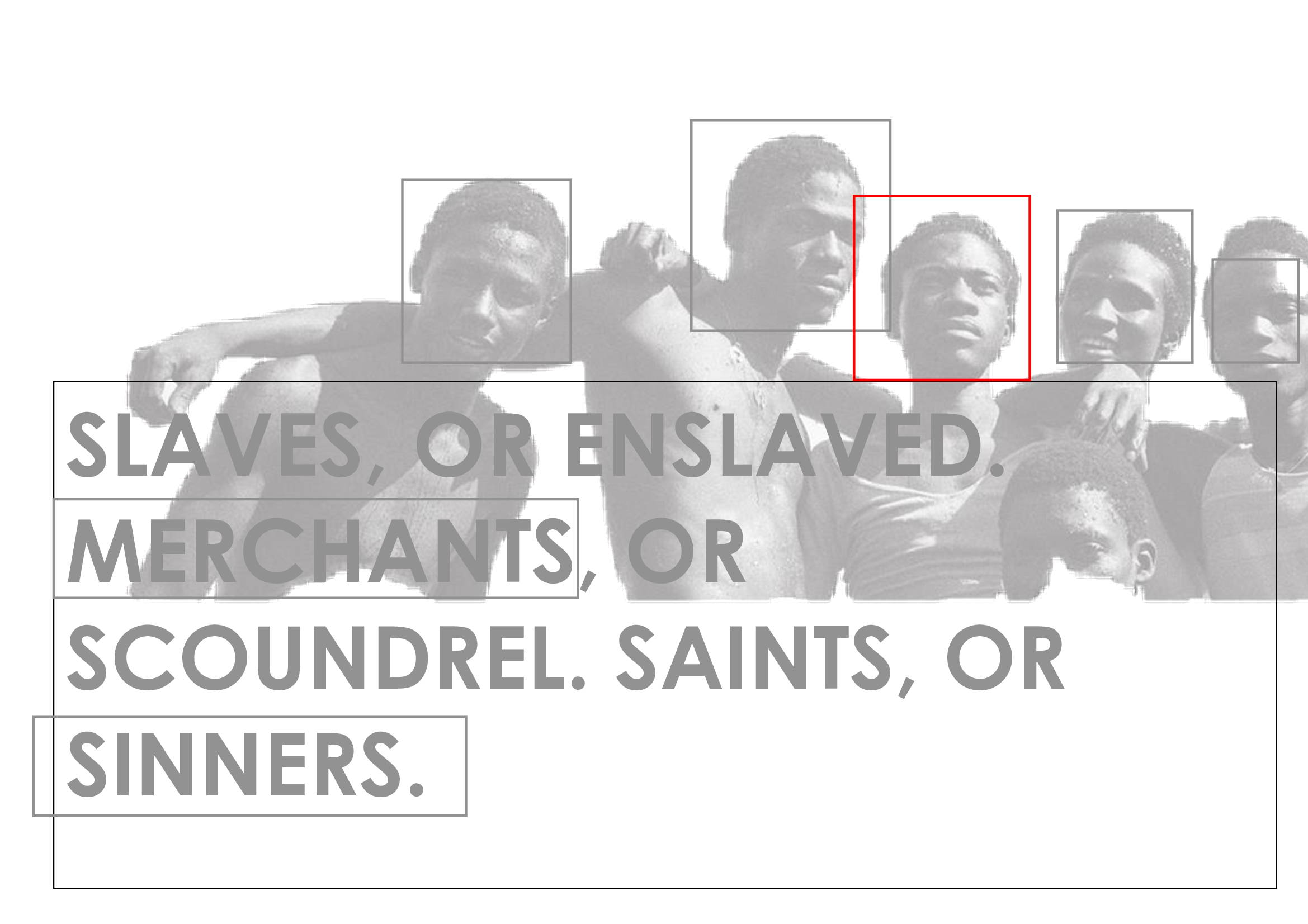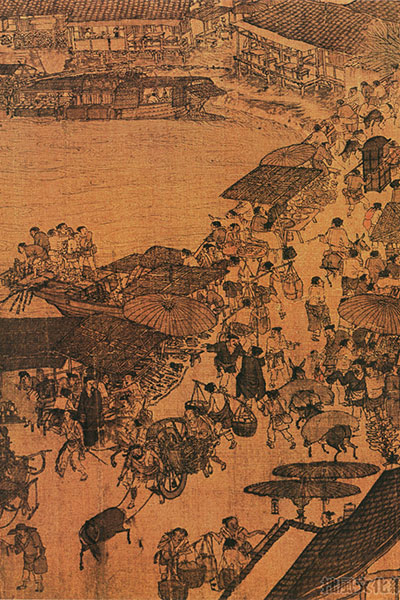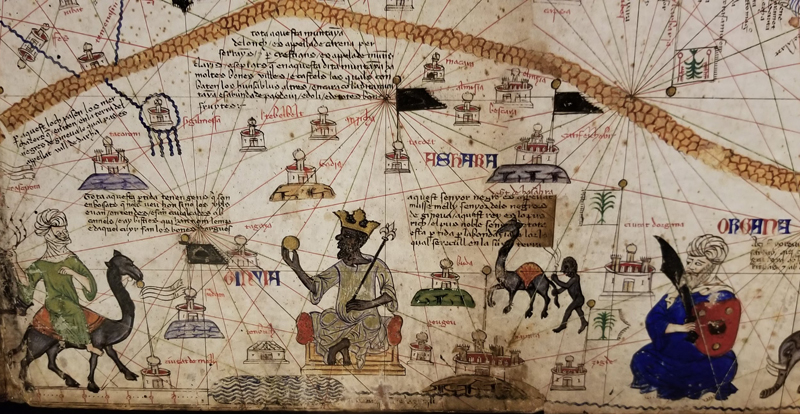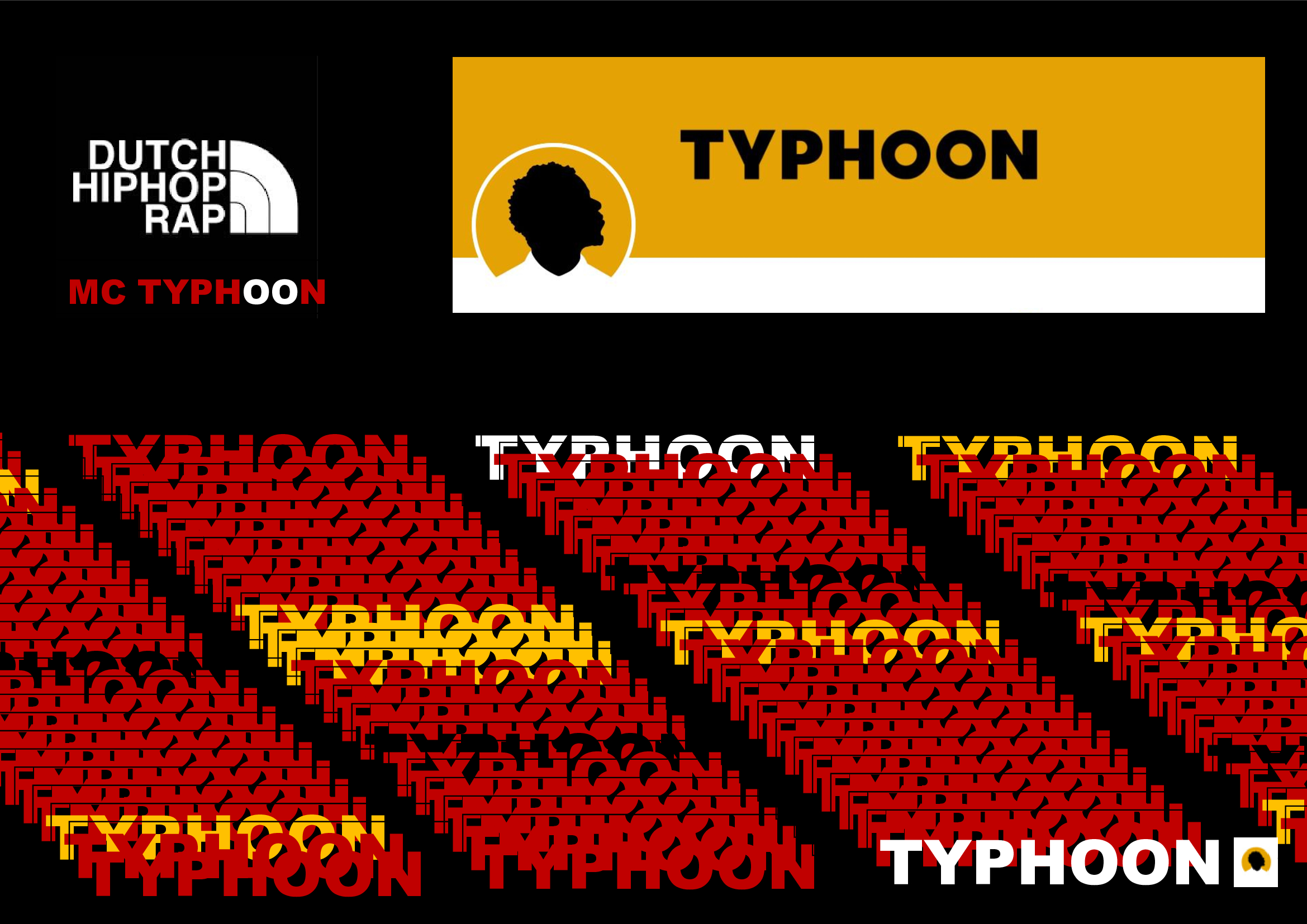-
مؤلفالمشاركات
-
-
العبد ، أو
مستعبدون.
التجار أو
الوغد.
القديسين ، أو
مذنبون.

Introduction & Timeline:
افريقيا القديمة لم يكن معزولا عن العالم القديم.
For centuries, Eurocentric narratives have dominated global historiography, frequently marginalizing Africa’s role in world history. Perpetuated by colonial-era historians, these perspectives often depicted Africa as a dark, passive and isolated continent.
Historical and archaeological research across academia, reveals an intricate picture of the ancient trans-saharan African trade, dating from approximately 4000 ق(قبل فترة طويلة من الأول قرن م; and described as beginning with the age of African metallurgy in the case of the blacksmith-kings of Tarkur ‘old Senegal’)تمتد على القديم مملكة من كوش في كرمة, السودان؛ عبر ال درب الاربعين trade route, and facilitating the exchange of diverse commerce in incense, wheat, spices, gold, salt, animals/poultry, skilled artisan’s and ivory; and importantly, the import of minerals such as ‘سبج' من Tarkur [old Senegal] to create blades, objects, and metalworking – underscoring the high value placed on African trade-craft within these trade corridors. The region was an ethnic melting pot, with commerce spanning extensive geographical footprints; with records showing lasting contributions of Africa to other regions and cultures, across Mesopotamia, the Levant, و ال Aegean world, and recent anthropological research finding ماندينغ النقوش في الغابات الكثيفة South America, suggesting early trans-continental connections, and cultural exchanges.
طرق الحرير:
حملت التجارة المعلومات وربطت الشبكات التجارية المتشابكة أفريقيا to most of the old world, brought about an exchange of trade in oriental [eastern] silks for العنبر, يشم, الأصباغ, بهارات, ذهب, زيت, أدوات مزورة بما في ذلك المخلوقات الأسطورية مثل زرافة [أو ال قيلين، التبجيل في صينى, اليابانية و الكورية الميثولوجيا] إلخ، حوالي 114 ق، من التوسع سلالة هان.
ظل فن إنتاج الحرير حصريًا صينى export during this period, and the Han imperial documents show diplomatic and trade relations between the سلالة هان and Africa, with a diplomatic envoy ‘تشانغ تشيانتم إرسالهم لتأمين التجارة عبر القارات ، فضلاً عن إنشاء محميات سياسية لتجارة الحرير المزدهرة. استمرت هذه الممارسة في وقت مبكر سلالة مينغ، مع سجلات "تشنغ هي(دبلوماسي وأدميرال) يزور المناطق الداخلية من إفريقيا بين 1419 م و 1433 م، والمبعوثين / السفراء الأفارقة الذين تمت دعوتهم من قبل الإمبراطور تشو دي للاحتفال بالتفاصيل العام الصيني الجديد شيدت حديثا المدينة المحرمة؛ حوالي 1421 م.
ال الحضيض اليوناني الروماني "محيط البحر الأحمر"قدم أيضًا سجلاً لمسارات الإبحار والفرص التجارية بين إفريقيا وموانئ التجارة الخارجية / الاستراتيجية.
ال الإمبراطورية الرومانية ورثت الشبكات التجارية القائمة التي شكلت جزءًا من طريق الحرير بين طرق التجارة الشرقية و أفريقيابعد الفتح مصر في 30 ق.
Lucius Septimius Severus’s Ancestry – (“Aethiops quidam e Numero Militari”):
امتصت الإمبراطورية الرومانية المتوسعة التجارة والأرستقراطية والتقاليد العسكرية للنخب الحاكمة في الدول ذات السيادة المحتلة ، وأقامت علاقات مجلس الشيوخ / الدبلوماسية. تم سرد التنوع الهائل متعدد الأعراق الذي كان موجودًا داخل السكان المزدهر للإمبراطورية الرومانية لشمال إفريقيا في Notitia Dignitatum ("قائمة المكاتب الرومانية الإدارية") ، وكما ينعكس في الماهر الأفريقي (اثيوبس / موري / موريش) فوج عسكري يشكل جزءًا من حملات الجيش الروماني في جرمانيا وبريطانيا ، وفي Lucius سبتيموس سيفيروس أسلاف.
في 193 م, لوسيوس سيبتيموس سيفيروس توج حاكم كل الإمبراطورية الرومانية وأصبحت أول مدينة في روما الأفريقي إمبراطورية؛ نتاج اتحاد / تحالف ثقافي وسياسي بين أب أفريقي وأم من أصل روماني إيطالي ، قادمة من عائلة رومانية بارزة من الفروسية.
أبرز رحلة استكشافية لاحقة للإمبراطور سيبتيموس سيفيروس كانت السيادة في مقاطعة بريتانيا؛ وحيث مات فيه يورك، حوالي 211 م.
خلال هذه الفترة عرف الأفريقيون بأسماء عديدة ، وقادوا غزو شبه الجزيرة الايبيرية حوالي 711 م حتى 1492 مبعد سقوط الرومان ثنائي الطيف Africae (أبرشية أفريقيا الرومانية) ، و الإمبراطورية الرومانية.
استمرت تجارة الحرير في إفريقيا لفترة طويلة من الزمن ، وما يعرف الآن باسم `` طرق الحرير ، أو طريق الحرير '' كان موجودًا لأكثر من 1500 عام ، حتى ما يقرب من 1453 م.

ال زيمبابوي العظمى, مالي و امبراطورية غانا lay on the trade route, between the east coast and the interior of Africa, giving rise to a host of middlemen and trading posts, with the requirement for taxes and protection along the way.
ينتشر الدين والتكنولوجيات الجديدة والابتكار والأفكار على طول الممرات التجارية الأفريقية بشكل مرن مثل السلع ، مما أدى إلى نمو المدن متعددة الثقافات على طول المناطق الداخلية لطرق التجارة عبر الصحراء ، وهي: جاو و تمبكتو، إلخ
في ذروة النهضة الأفريقية، وهو نظام حكم جيد التنظيم تحت قيادة King ، مثل موسى كيتا الأول أو مانسا موسىطورت شبكات السفر والتجارة الواسعة للتجار الأفارقة وعلماء المسلمين الأفارقة تجارة كتب مهمة وتأسيسها تمبكتو كمركز علمي في أفريقيا ، حوالي 988 م وما بعده.
As a result, tales of Africa’s wealth, exotic exports, renaissance, lifestyle and high-culture fuelled speculation in أوروبا, as not just being extremely rich, but also being particularly mysterious. These stories helped prompt the European interest and exploration of opportunities in Africa.
The decline of these African city-states resulted from a shift in the dynamics of international trade, internal rivalries [notably, the السعديين/مغربي غزو النيجر الداخلية ، معركة تونديبيو ال معركة ألكاسير كويبير] طرق تجارة الإبحار الجديدة ، مهارات وأسلحة بحرية / ملاحية متقدمة ، زيادة الطلب والمنافسة على الأرض ، الوصول إلى السلع والموارد مثل الذهب ، تحول في الهيمنة الجغرافية والأيديولوجية.
التشرذم السياسي للمنطقة ، ونهب المدن متعددة الثقافات والأدب والكنوز من الإمبراطوريات المركزية مثل مالي ، سونغهاي ، كونغو / الكونغو ، والحضور المتزايد للإمبراطورية. العثماني‘s, and Portugal, يمثل نهاية المنطقة كقوة فعالة / ديناميكية في التجارة.

The beginnings of European
Activity in Africa:
مثل المسافرين الأجانب الآخرين وموردي البضائع من قبل ، كان التجار والتجار الأفارقة منفتحين بالتأكيد على الوافدين الأوروبيين الجدد.
وصول التجار الأوروبيين الأوائل بعد أكثر من 5440 سنة من تبادل (معروف وموثق) بدأت التجارة في إفريقيا ، ويمكن ربطها بقبطان برتغالي شاب 'أنتام غونسالفيزالذين ، بعد سماعهم قصصًا عن إمكانات التجارة والربح ، شرعوا في رحلته إلى غرب الصحراء الأفريقية في 1441 م، بموجب تعليمات "دوم هنريكي من البرتغال, دوق فيسيوللحصول على جلود الفقمة والفلفل الأسود والتوابل والزيت لبيعها لاحقًا في لشبونة.
البرتغال was desirous to retain a monopoly on trade in Africa, and sought justification of its position, ‘early discoveries’ and sphere of influence (ال طرق تجارية جديدة) ، من خلال أ البابوي من 1442 ممرتبة بواسطة البابا يوجين الرابع, the consequence of which would be the legitimisation of the capture and enslavement of non-Christian Africans [in the newly explored land], under the premise and designation of the enterprise as a crusade; a البابوي بواسطة البابا نيكولاس الخامس، في 1452 م و 1455 م ، وثور بابوي يقدس معاهدة تورديسيلاس (عام 1494 م).
في ذلك الوقت ، خلال القرنين الخامس عشر والسابع عشر ، كانت الفضة والذهب هي المعايير الدولية للتبادل في أوروبا وآسيا. كان المعروض من المعادن الثمينة مهمًا لتعزيز الاقتصادات ، ودعم العملات للتبادل والاستيراد.
نفس المنطق والقوى المادية كانت تعمل في استغلال ذهب المايا من قبل إسبانيا، وعندما استنفد هذا ، مآثر مناجم الفضة المكسيك. في الواقع ، نشأ الكثير من التنافس بين الدول الأوروبية في القرنين الخامس عشر والثامن عشر من رحم الرغبة في حماية وتعزيز اقتصاداتها وعملاتها.
سمعت أخبار مآثر البرتغاليين في إفريقيا في الجوار إسبانياوعبر بقية أوروبا، مع شعور معظمهم بالتخلي عن الغنائم.
بين 1495 م و 1559 مالمئات من السفن البرتغالية تمت مداهمتها والاستيلاء عليها ونهبها من قبل الإنجليز ، وبالمثل ، التورط الإنجليزي الخفي في معركة أكادير ("سانتا كروز') 1541 م.
الملك جون الثالث من البرتغال كتب إلى الملكة ماري ملكة إنجلترا (1555 م) نتيجة للمطالبة بتعويضات عن السفن المضبوطة والمنهوبة. والجدير بالذكر ، في كل من البرتغال وإسبانيا وعبر أوروبا ، كان الملك هو الذي أنشأ ألقاب الاحتكارات التجارية عبر "الحدود التجارية الناشئة" الجديدة ، مما أدى إلى اشتقاق واجب أو ضريبة للاحتكارات التجارية.
Notable timelines of European involvement in Africa include Spain (from 1462) ؛ بريطانيا العظمى (من 1562, with Queen Elizabeth I granting legitimacy to the privateering activities of جون هوكينز وفرانسيس دريك وآخرون. من خلال الإصدار الرسمي لشعار النبالة الفريد ، و برمودا أصبح حيازة التاج في 23 نوفمبر 1614) ؛ هولندا (من 1592) ؛ فرنسا (من 1594)، إلخ.
تتطلب التجارة مع إفريقيا ثروة هائلة وتمويلًا. وظل الامتياز الحصري للملوك الأوروبيين أو النبلاء أو التجار الأغنياء. وهكذا طور الأوروبيون المزيد من الابتكارات ، للتجارة المرغوبة في أفريقيا ، من خلال إنشاء الشركات التجارية. تم تأسيس شركة الهند الشرقية الهولندية وشركة الهند الغربية الدنماركية وشركة الهند الغربية الفرنسية في عام 1602/1659/1664 على التوالي ، مما مكّن طيفًا أوسع من التجار من الاستثمار في التجارة المربحة المكتشفة حديثًا في إفريقيا ؛ تأمين ونشر مخاطر أعمالها.
ال شركة رويال ادفينتشررز من إنكلترا في عام 1660 بواسطة الملك تشارلز الثاني من إنكلترا، وهو ميثاق يمنح احتكار التجارة في الساحل الغربي لأفريقيا ، وتحول إلى شركة رويال افريكان في 1672.
كان تطور هذه المؤسسة المبتكرة ، الشركة المساهمة / التجارية ، أهم تطور منفرد في العالم القرن ال 17 commerce. This guaranteed أوروبا could harness its resources towards the structuring and maintaining of trade in Africa, as well as much of the world.
في النهاية ، أنشأت الآلية التي من خلالها أوروبا، عن غير قصد ، انتشر وتسلل واستعمر معظم أنحاء العالم.
خلال هذه الفترة ، شهد المشهد الاجتماعي والسياسي لأوروبا تحولات متتالية من الإقطاع إلى التجارة وإلى مركز الأعمال الصناعية. ظهرت لندن وأنتويرب وليفربول وأمستردام ونانت كمراكز مالية رئيسية في أوروبا.
Reductionism and the
tradition of diminishing
African cultures and its
place in history: [The
Language of Legal
Fiction.]
ال كوربوس جوريس [The body of Laws] creates a critical foundation from which to think about the problem of legal personhood.
اللولب الطبيعي / (ليكس ناتوراليس) [Natural Laws], (eternal and immutable) renders conceptually, corporeal values, intrinsic to human nature; complex sentient creatures imbued with, not only individualism, needs and appetites, but self-awareness (consciousness), rights, privileges, obligations, the capacity to create legal relations, and by the limits of pain, illness, suffering and death.
المفاهيم المعيارية النظرية للفقه (القواعد القانونية) تخلق ملامح الاعتراف لكيانات مختلفة / متعددة الأوجه ، والجماعات ، والأفراد ، وعملية "الاخرين”, humanizing, and expanding the community of persons. This is problematic, plagued by uncertainty and indeterminacy (at worst, arbitrary), and limits the full potential and promise of personhood.
Oblivious to the significance of the word, the pervasive use of terms such as “slave” and/or words analogous to this, pervades and conditions all other inherent identities, either chosen or given. To reduce the person [or body] to a non-human noun is to produce linguistic violence, and strips the individual of agency. To argue contrary flies in the face of empirical fact. The scholarly exercise of embellishing and sugar-coating the language of historical recall, implies a degree of wilful and/or premeditated amnesia and wastes an opportunity to reinforce the brutish-callousness of the word.
Likewise, the reduction of الأفريقي realities as mythic representations, or phenomena, devoid of history, commerce, philosophy and intellectual pursuits – that Africa had no history – is a Eurocentric idea, given the aforementioned timeline, and perpetuates a narrative that erases the tangible contributions of African city-states to global civilization. So also is the contemporary construct of ‘third-world’, ‘underdeveloped’, ‘developing’, or ‘undemocratic’ – judged pursuant to Eurocentric standards.
Notably, distinguished African historian’s, anthropologist’s and sociologist’s such as الشيخ أنتا ديوب, جون هنريك كلارك ، و WEB Du Bois وآخرون, have defined this peculiar/Eurocentric faux-ethnographic characterisation of the African sociocultural ethnology, as indeed a ‘new invention’, a religion founded on the Eurocentric (scholarly) dogma that all the hues of God are grounded on the intrinsic hierarchy of religious orthodoxy; with the inevitable corollary of the collective physical, ideological, religious, systemic or cultural traits of the ‘آخر' (الأفراد الذين كانوا خارج هيكل القوة المهيمنة المعاصر) باعتبارها أقل قيمة بشكل ملحوظ من قبل "المجتمعات الحديثة".
The primary basis for this reconfiguration was to institute, and strengthen the agency of Eurocentric capitalist systems, backed by a cluster of social, incorporeal/religious, semantic conjecture and legal regimes.
ونتيجة لذلك ، وبلا أدنى شك ، حيث لم يكن هذا الدين الجديد (أو البناء المهيمن) قادرًا على كسب المتحولين من خلال الإغراء السلمي أو الخوف ، فقد استخدم أساليب بدائية / غير إنسانية لحماية سلطته ، وقوانين التجنيد والعادات والمؤسسات لوضعها في تأثير صلاحياته.
خاتمة:
ظهر علم اجتماع الهيمنة من خلال الثيران البابوية من 1442 م, 1452 م, 1455 م، و 1494 م. Its associated theories and pseudo-scientific markers of ‘natural differences’ of ال 18th, the 19th, و the 20th قرن, institutionalised and provided a moral justification to sustain the systemic avarice emanating from أوروبا و أمريكا; leading up to the 21st century. The core of this system is normalised through contemporary forms and mediums; vastly embedded in the social, scientific, economic/financial, political (public policy), academic, spiritual, media, literary and cultural spaces, and exercised through an intricate web of norms and laws, the institutional and structural power accumulated recently.
التدخل الأوروبي حوالي mid-15th century, تحطمت الهياكل الأفريقية المتقدمة ، التقدمية ، السياسية والاجتماعية. حتى منتصف القرن الخامس عشر (م), أفريقيا كانت قوة اقتصادية ناشئة. كان لدى وسط إفريقيا ثقافة حديدية متطورة موجودة تربط بين الشمال والجنوب والمحيط الهندي. كان غرب إفريقيا مرتبطًا بالبحر الأبيض المتوسط عن طريق طرق التجارة عبر الصحراء. وصول الأوروبي 1441 م فصاعدا ، توقف التطور الطبيعي للبيئة التجارية الأفريقية المزدهرة المعقدة ومتعددة الثقافات ؛ مشهدها الصناعي والمتخصص / العلمي والديني والعلمي القديم.
وتسببت الفوضى التي أعقبت ذلك في تشريد العائلات وتسبب في معاناة لا توصف الرجال والنساء والأطفال ، with Africa losing centuries-old skilled artisans, goldsmiths, jewellers, masons, carpenters, farmers, musicians, priests, kingmakers and scholars; the loss of neighbours, brother’s, sister’s, aunt’s, uncle’s, son’s, daughter’s, cousin’s, mother’s, father’s, and culture’s.
What is rarely told is that a staggering 40% of the UK’s budget in 1833 م, the equivalent of approximately £20bn in today’s terms, was used to compensate English merchants towards the eventual demise and collapse of the illicit profiteering of trade in Africa; excluding displaced African’s from any restitution.
بالنسبة لأيديولوجية تقوم على مبدأ الهيمنة الزائفة والبنية الرأسمالية ، فإن التأثير المدمر على القارة الأفريقية ، من حيث الأنساب والاقتصاد والمال ، لا يقاس.
© النضج
Bibliography:
1. African Historical Reach and Bibliography:
- Fage, J. D., & Oliver, R. A. (Eds.). (1975). The Cambridge History of Africa: Volume 2, c. 500 BC–AD 1050. Cambridge University Press.
- This book provides an extensive overview of ancient Africa, detailing the role of trade routes, metallurgy, and economic exchanges across the Sahara, which connects with the spread of African cultural practices.
- Ehret, Christopher. (2002). The Civilizations of Africa: A History to 1800. University of Virginia Press.
- Ehret’s work focuses on early African civilizations, including those involved in trans-Saharan trade, providing a basis for understanding the significance of metallurgy and commerce in pre-Islamic West Africa.
- McIntosh, Roderick J. (1998). The Peoples of the Middle Niger: The Island of Gold. Wiley-Blackwell.
- McIntosh’s research delves into the role of the Niger River in trade and the movement of goods across West Africa, including gold, salt, and other materials crucial to the trans-Saharan trade network.
- Dixon, David, and Dixon, Roger. (1983). “The Trans-Saharan Gold Trade: The Kingdom of Ghana and the Islamic Empires of the West.” History Today, 33(10), 16-23.
- This article covers the importance of the gold trade and its role in the ancient trans-Saharan trade network, with specific emphasis on the early West African empires like Ghana and their trading relationships.
- Rathbone, R. (2000). “The Trans-Saharan Trade.” In Africa: The Art of a Continent, edited by T. Phillips, 72-75. Royal Academy of Arts.
- Rathbone discusses trans-Saharan trade in terms of its artistic and cultural impacts, including how goods like ivory and gold affected the material culture of ancient African societies.
- Oviedo, Fernández de. (1535). Natural History of the West Indies (Translated by Sterling A. Stoudemire, 1959). University of North Carolina Press.
- Oviedo’s work, though initially focused on the Americas, is referenced in discussions about African influences in pre-Columbian American contexts, especially considering potential contacts suggested by more recent studies of inscriptions.
- Van Sertima, Ivan. (1976). They Came Before Columbus: The African Presence in Ancient America. Random House.
- Although this work has faced some scholarly criticism, it remains a widely cited source discussing the possibility of pre-Columbian African contact with the Americas, including evidence like inscriptions.
- Mauny, Raymond. (1971). “The Western Sudan.” In General History of Africa: Volume II, Ancient Civilizations of Africa, edited by G. Mokhtar, 290-314. Heinemann.
- This chapter in the UNESCO General History of Africa provides details on the historical and cultural dynamics of the Western Sudan, including trade routes, metallurgical practices, and commerce that spanned the Sahara.
9. Cheikh Anta Diop
- Diop, Cheikh Anta. (1981). Civilization or Barbarism: An Authentic Anthropology. Lawrence Hill Books.
- This foundational work examines African civilizations’ contributions to world history, including their advancements in metallurgy, trade, and cultural dissemination.
- Diop, Cheikh Anta. (1974). The African Origin of Civilization: Myth or Reality. Lawrence Hill Books.
- A critical exploration of African civilizations’ roles in shaping the ancient world, focusing on Egypt and its connections to sub-Saharan Africa.
10. John Henrik Clarke
- Clarke, John Henrik. (1993). African People in World History. Black Classic Press.
- A concise yet impactful narrative of Africa’s role in global history, emphasizing its civilizations, trade routes, and the spread of knowledge.
- Clarke, John Henrik. (1994). Christopher Columbus and the African Holocaust: Slavery and the Rise of European Capitalism. A&B Books.
- This book critiques European expansionism, connecting the transatlantic slave trade to Africa’s economic exploitation.
11. Basil Davidson
- Davidson, Basil. (1994). Africa in History: Themes and Outlines. Simon & Schuster.
- While not African himself, Davidson’s collaborative work with African scholars has provided deep insights into the trans-Saharan trade and African empires.
12. Runoko Rashidi
- Rashidi, Runoko. (2001). Introduction to the Study of African Classical Civilizations. Karnak House.
- Focuses on ancient African civilizations’ global impact, including their trade networks and intellectual contributions.
- Rashidi, Runoko. (1995). African Presence in Early Asia. Transaction Publishers.
- Co-authored with Ivan Van Sertima, this work traces African influence in Asia, offering parallels to Africa’s role in ancient global trade.
13. Ivan Van Sertima
- Van Sertima, Ivan (Ed.). (1983). Black Women in Antiquity. Transaction Publishers.
- Highlights the contributions of African women in ancient trade, governance, and culture.
14. Molefi Kete Asante
- Asante, Molefi Kete. (2007). The History of Africa: The Quest for Eternal Harmony. Routledge.
- A detailed overview of Africa’s historical contributions, including its trade empires and intellectual traditions.
- Asante, Molefi Kete. (1988). Afrocentricity: The Theory of Social Change. African World Press.
- Introduces Afrocentric theory as a lens to understand Africa’s historical and cultural prominence in global history.
15. Sylviane A. Diouf
- Diouf, Sylviane A. (1998). Servants of Allah: African Muslims Enslaved in the Americas. NYU Press.
- Explores the role of African Muslim scholars and merchants in shaping the Atlantic world through trade and culture.
16. George G.M. James
- James, George G.M. (1954). Stolen Legacy: Greek Philosophy is Stolen Egyptian Philosophy. Philosophical Library.
- In this seminal work, James argues that much of what is attributed to Greek philosophy is rooted in African (Egyptian) knowledge systems, highlighting Africa’s intellectual contributions to the world.
17. Chancellor Williams
- Williams, Chancellor. (1974). The Destruction of Black Civilization: Great Issues of a Race from 4500 B.C. to 2000 A.D. Third World Press.
- A groundbreaking study of African civilizations, detailing their decline due to internal and external factors, including European and Arab incursions, and emphasizing the centrality of trade in African history.
18. Yosef Ben-Jochannan
- Ben-Jochannan, Yosef. (1993). Africa: Mother of Western Civilization. Black Classic Press.
- A comprehensive examination of Africa’s foundational role in the development of Western civilization, including trade, science, and culture.
- Ben-Jochannan, Yosef. (1989). Black Man of the Nile and His Family. Afrikan World Infosystems.
- Explores the contributions of Nile Valley civilizations to global history, with a focus on the interconnectedness of African societies and trade networks.
19. Walter Rodney
-
- Rodney, Walter. (1972). How Europe Underdeveloped Africa. Howard University Press.
- Examines the economic and social impact of European intervention in Africa, particularly in disrupting preexisting trade networks.
- Rodney, Walter. (1981). A History of the Upper Guinea Coast, 1545 to 1800. Monthly Review Press.
- Focuses on African agency in trade and governance before and during European incursions.
- Rodney, Walter. (1972). How Europe Underdeveloped Africa. Howard University Press.
20. Vansina, Jan
-
- Vansina, Jan. Paths in the Rainforests: Toward a History of Political Tradition in Equatorial Africa. Madison: University of Wisconsin Press, 1990.
21. Wright, Donald
-
- Wright, Donald. The World and a Very Small Place in Africa. New York: M.E. Sharpe, 1997.
In-Text Citations
- For information on the ancient trans-Saharan trade, reference Fage & Oliver (1975) و Ehret (2002), as both texts provide foundational insights into the role of trade across the Sahara from prehistoric times.
- ال McIntosh (1998) و Dixon & Dixon (1983) references provide additional support for understanding the trade routes that facilitated exchanges of goods like gold and salt, critical to West Africa’s economy.
- ال Van Sertima (1976) و Oviedo (1535) sources cover anthropological evidence of early African inscriptions and cultural influences potentially present in the Americas.
- For metallurgy in ancient Africa, Mauny (1971) و Munson (1980) discuss the techniques and cultural significance of early metalworking, emphasizing its role in trade and economy across West Africa.
2. Africa/Chinese Historical Links and Bibliography:
- Liu, Xinru. (2010). The Silk Road in World History. Oxford University Press.
- This book offers an overview of the Silk Road, including the early Han Dynasty’s efforts to expand trade and diplomatic relations across Asia, reaching as far as the Middle East and Africa. It also discusses Zhang Qian’s missions and the Chinese silk monopoly.
- Adshead, S.A.M. (2000). China in World History. Palgrave Macmillan.
- Adshead’s work covers the history of China’s interactions with the world, detailing the Han Dynasty’s and Ming Dynasty’s diplomatic outreach to regions including Africa, as well as trade exchanges involving exotic goods.
- Levathes, Louise. (1994). When China Ruled the Seas: The Treasure Fleet of the Dragon Throne, 1405–1433. Oxford University Press.
- Levathes provides an in-depth look at the maritime expeditions of Zheng He, including his journeys to East Africa, diplomatic exchanges, and the arrival of African emissaries in China during the Ming Dynasty.
- Hansen, Valerie. (2012). The Silk Road: A New History. Oxford University Press.
- Hansen explores the Silk Road from a fresh archaeological and historical perspective, touching on the trade goods (like silk, jade, and spices) that moved through interconnected trade routes. She also discusses cultural exchanges, including the reverence for exotic animals like the giraffe.
- Yao, Alice. (2010). “Silk Road Traders: A Global Business Network.” Journal of World History, 21(3), 255-274.
- Yao examines the Silk Road’s role as an intercontinental network for trade and culture, which allowed the movement of goods like amber, jade, and gold across Asia, the Middle East, and Africa.
- Wang, Gungwu. (1998). The Nanhai Trade: A Study of the Early History of Chinese Trade in the South China Sea. Eastern Universities Press.
- This study focuses on Chinese maritime trade, particularly during the Han and Ming Dynasties, exploring early connections with Southeast Asia and the Indian Ocean, which facilitated exchanges with Africa.
- Needham, Joseph. (1971). Science and Civilisation in China, Volume 4: Physics and Physical Technology, Part 3: Civil Engineering and Nautics. Cambridge University Press.
- Needham’s work delves into Chinese nautical advancements that made expeditions to Africa possible, providing insights into Admiral Zheng He’s voyages and the types of goods and diplomatic missions exchanged.
- Blanchard, Ian. (2001). Mining, Metallurgy and Minting in the Middle Ages: Asiatic Supremacy, 425–1125. Franz Steiner Verlag.
- This book contextualizes the economic and technological exchange of tools, metalworking, and other commodities involved in trade between China and Africa and highlights the integration of such goods into local economies.
- McNeill, William H. (1991). The Rise of the West: A History of the Human Community. University of Chicago Press.
- McNeill’s history provides a broader context for understanding intercontinental exchanges, including China’s influence on Africa and Europe through goods, cultural exchanges, and diplomatic relations.
- Dreyer, Edward L. (2007). Zheng He: China and the Oceans in the Early Ming Dynasty, 1405–1433. Pearson Longman.
- This book is an authoritative source on Zheng He’s voyages, detailing the scope of his expeditions and the diplomatic relationships established with East Africa, as well as the Chinese court’s welcoming of African envoys.
In-Text Citations
- For references on the early Chinese silk trade and Zhang Qian’s diplomatic missions under the Han Dynasty, use Liu (2010), Adshead (2000)، و Hansen (2012), all of which provide insight into the reach of the Silk Road and Chinese diplomatic expansion.
- For the significance of Zheng He’s voyages to Africa during the Ming Dynasty, Levathes (1994) و Dreyer (2007) offer comprehensive details, including the exchange of envoys and rare African animals.
- On the broader context of intercontinental trade routes involving Africa, Yao (2010) و Needham (1971) provide valuable insights into maritime technology and the kinds of exotic goods exchanged.
- Wang (1998) و Blanchard (2001) can be cited for details on the types of goods involved in trade (amber, jade, silk, spices, and tools) and the technology enabling long-distance trade across the Indian Ocean.
3. African Expansion, Historical Influence and The Roman Empire Bibliography:
- Casson, Lionel. (1989). The Periplus Maris Erythraei: Text with Introduction, Translation, and Commentary. Princeton University Press.
- Casson’s authoritative work on محيط البحر الأحمر provides insight into Graeco-Roman maritime routes, trade opportunities, and African trade hubs in relation to Rome’s expanding influence in East Africa and the Indian Ocean.
- Ball, Warwick. (2016). Rome in the East: The Transformation of an Empire. Routledge.
- This book explores the Roman Empire’s eastern trade networks and its incorporation of foreign elites, military, and aristocratic structures into the Roman political fabric, highlighting the importance of African and Eastern influences.
- Birley, Anthony R. (1971). Septimius Severus: The African Emperor. Yale University Press.
- Birley’s biography details the life of Septimius Severus, his ancestry, rise to power, and military campaigns, particularly focusing on his African heritage and political alliances within the Roman Empire.
- Mattingly, David J. (1995). Tripolitania. University of Michigan Press.
- Mattingly’s work on Roman North Africa provides details on the Roman Diocese of Africa and African military regiments, such as the Moorish (Mauritanian) soldiers, and offers an analysis of the African provinces’ influence within the Roman administrative and military systems.
- Edmondson, Jonathan, & Keith, Alison. (Eds.). (2008). Romanization and the City: Creation, Transformations, and Failures. University of Toronto Press.
- This book explores how Roman cities, especially in North Africa, were shaped by Roman policies and by African influences, highlighting the roles of African elites and their integration into Roman aristocratic structures.
- Shaw, Brent D. (2014). Bringing in the Sheaves: Economy and Metaphor in the Roman World. University of Toronto Press.
- Shaw discusses the economic integration of African provinces into the Roman Empire, detailing trade, agriculture, and commerce, particularly after the Roman conquest of Egypt, and Africa’s role in the empire’s economy.
- MacDonald, Eve. (2015). Hannibal: A Hellenistic Life. Yale University Press.
- While primarily a biography of Hannibal, this book provides context on North Africa’s military traditions and the legacy that influenced later Roman-era African leaders and military regiments.
- Hoyos, Dexter. (2003). Hannibal’s Dynasty: Power and Politics in the Western Mediterranean, 247–183 BC. Routledge.
- Hoyos’s study of the Punic legacy offers insights into the military and political dynamics in North Africa that shaped the elite African regiments within the Roman army, which were later integral to campaigns in Germania and Britannia.
- Lewis, Archibald R., & Runyan, Timothy J. (1985). European Naval and Maritime History, 300–1500. Indiana University Press.
- This source provides an overview of naval history, including the African-led conquest of the Iberian Peninsula and the later Moorish influence on European naval strategies, as well as cultural exchanges through maritime routes.
- Kennedy, Hugh. (1996). Muslim Spain and Portugal: A Political History of al-Andalus. Routledge.
- Kennedy’s work is a critical source for understanding the African-led Islamic conquest of the Iberian Peninsula and the continuation of Roman-influenced administrative systems in Muslim-ruled Spain after the fall of the Roman Empire.
In-Text Citations
- For the role of محيط البحر الأحمر in documenting African and Roman trade routes, Casson (1989) is a foundational text that provides primary information on sailing routes and trade opportunities along the African coast.
- Birley (1971) و Ball (2016) provide extensive details on the life of Emperor Septimius Severus, his African ancestry, and the integration of African elites into the Roman political and military hierarchy.
- Mattingly (1995) و Shaw (2014) offer context on the African provinces under Roman rule, detailing African military regiments and administrative structures like the Notitia Dignitatum, which recorded Roman military offices.
- For the Moorish-led conquest of the Iberian Peninsula post-Roman Empire, Kennedy (1996) و Lewis & Runyan (1985) are key sources detailing the continuity of Roman cultural influences and the role of African rulers in shaping medieval Iberia.
4. The Early Interaction Between Europe and Africa Bibliography:
- Levtzion, Nehemia, & Hopkins, John F. P. (2000). Corpus of Early Arabic Sources for West African History. Princeton University Press.
- This book compiles Arabic sources that document the history and trade of West African empires, such as Ghana and Mali, highlighting their involvement in the trans-Saharan trade network and the role of Islamic scholars in cities like Timbuktu.
- Curtin, Philip D. (1984). Cross-Cultural Trade in World History. Cambridge University Press.
- Curtin’s work provides an analysis of the networks connecting African empires to global trade routes, the influence of African middlemen, and the spread of religious and cultural ideas through these interactions.
- Hunwick, John O., & Boye, R. (2003). The Hidden Treasures of Timbuktu: Rediscovering Africa’s Literary Culture. Thames & Hudson.
- This book examines Timbuktu’s role as a scholarly and cultural center in Africa, its rich manuscript heritage, and its influence on European perceptions of Africa’s wealth and intellectual achievements.
- Newitt, Malyn. (2005). A History of Portuguese Overseas Expansion, 1400–1668. Routledge.
- Newitt’s study covers Portuguese maritime exploration, the establishment of early trade monopolies in Africa, and the papal endorsements that sanctioned the Portuguese monopoly and the slave trade.
- Pakenham, Thomas. (1991). The Scramble for Africa: White Man’s Conquest of the Dark Continent from 1876 to 1912. Harper Perennial.
- While focused on the later colonial period, Pakenham’s work provides context on the European competition for African resources and the establishment of trading corporations that paved the way for imperial dominance.
- Hopkins, A. G. (1973). An Economic History of West Africa. Longman.
- This economic history examines the West African trade economy, the rise and fall of powerful empires like Mali and Songhai, and the transition from indigenous trade networks to European control.
- Daaku, Kwame Yeboah. (1970). Trade and Politics on the Gold Coast, 1600–1720: A Study of the African Reaction to European Trade. Clarendon Press.
- Daaku’s book provides an African perspective on the European entry into African trade, the establishment of forts, and the rise of trading companies like the Royal African Company.
- Thornton, John. (1998). Africa and Africans in the Making of the Atlantic World, 1400–1800. Cambridge University Press.
- Thornton explores the role of Africans in shaping the Atlantic trade, including African merchants’ responses to European traders and the development of joint-stock companies like the Royal African Company.
- Pope Nicholas V. (1452). Dum Diversas. Papal Bull.
- This historical document is one of the papal decrees that sanctioned the Portuguese right to enslave non-Christians in Africa and the newly explored lands, marking a crucial point in the history of the African slave trade.
- Rönnbäck, Klas, & Broberg, Oskar. (2019). Capital and Colonialism: The Return on British Investments in Africa 1869–1969. Palgrave Macmillan.
- This study traces the financial investments in Africa by European powers, focusing on how European nations profited from African resources and trade monopolies.
- Dunn, Richard S. (1972). Sugar and Slaves: The Rise of the Planter Class in the English West Indies, 1624–1713. University of North Carolina Press.
- Dunn discusses the establishment of the joint-stock company model, tracing its role in financing the British empire’s ventures in Africa and the Americas, and the economic shifts that followed.
- Williams, Eric. (1944). Capitalism and Slavery. University of North Carolina Press.
- Williams’s classic work connects the rise of European capitalist enterprises, including joint-stock companies, with the African slave trade and explores how this system shaped global trade and wealth.
- Harms, Robert W. (2002). The Diligent: A Voyage through the Worlds of the Slave Trade. Basic Books.
- Harms provides insights into the economic, political, and social factors that drove the European slave trade in Africa, including the role of royal charters and trading corporations.
In-Text Citations
- For references on the trans-Saharan trade networks and the significance of West African cities like Timbuktu as intellectual centers, use Levtzion & Hopkins (2000) و Hunwick & Boye (2003), which document the cultural and economic vibrancy of these trading hubs.
- Newitt (2005) و Pope Nicholas V (1452) are key sources for understanding the Portuguese papal decrees and early European monopolies on African trade, which laid the groundwork for European exploitation.
- On the establishment of trading corporations like the Royal African Company and other joint-stock companies that bolstered European expansion in Africa, Thornton (1998), Daaku (1970)، و Williams (1944) provide foundational information.
- Rönnbäck & Broberg (2019) و Pakenham (1991) offer broader insights into the economic motivations behind European rivalry for African resources, and Hopkins (1973) contextualizes Africa’s economic history in light of these external influences.
Terminology:
The terms B.C. و C.E. are used to denote years in the Gregorian calendar system but differ in their origins and connotations. Here’s an explanation:
B.C. (Before Christ):
- Refers to the years before the estimated birth of Jesus Christ.
- It is a religious term rooted in Christian theology.
- Example: 500 B.C. means 500 years before the birth of Christ.
C.E. (Common Era):
- Refers to the same time period as A.D. (Anno Domini) but avoids explicitly religious connotations.
- C.E. is used in secular and interfaith contexts to promote inclusivity.
- Example: 500 C.E. means 500 years after the traditionally calculated birth of Christ.
Key Difference:
- B.C. is paired with A.D., which stands for “Anno Domini” (Latin for “in the year of our Lord”). These terms reflect a Christian-centric framework.
- C.E. و B.C.E. (Before Common Era) are neutral alternatives to A.D. و B.C., intended for a broader audience regardless of religious affiliation.
Both systems measure the same years and time periods; the difference lies in terminology and the cultural or religious neutrality of their usage.
- Fage, J. D., & Oliver, R. A. (Eds.). (1975). The Cambridge History of Africa: Volume 2, c. 500 BC–AD 1050. Cambridge University Press.
-
This is arguably the most comprehensive timeline summary I’ve encountered, detailing events leading up to, and following the Doctrine of Discovery.
It offers an in-depth and accurate depiction of historical developments, with bibliographic references and notes, which is very helpful for further scholarly, independent research.
Incorporating references significantly enhances its academic rigor; with valuable terms and references to guide further inquiry.
Brilliantly done!
-
This is jarring!
Considering the current shift in political ideologies, in the U.S, and Europe, with the normalisation of racist rhetoric, including sexist language, continued policies such as redlining, denialism, ‘othering’, under-funding, and warm nostalgia for the past, shouldn’t the Black community start developing ways to develop structures to protect itself from this attack?!
-
-
مؤلفالمشاركات
يجب عليك تسجيل الدخول للرد على هذا الموضوع.









